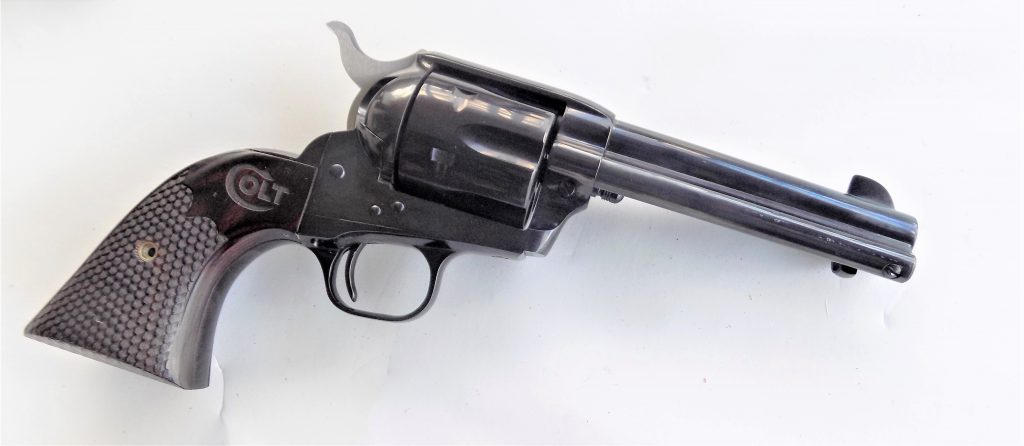
By R.K. Campbell | Contributing Editor
When it comes to the great handguns of the United States the Colt Single Action Army stands head and shoulders above any other in use in the 19th Century.
The Single Action Army- or Peacemaker- is now in its third century of use. The old gun is still useful for hunting, personal defense, and as an outdoors revolver. The Colt is expensive sure but it is a firing piece of history as well. I won’t discourage you from purchasing an original Colt. There are many variations and many calibers as well. The Colt is a subject of a great deal of study by historians. I have the greatest respect for true collectors who keep these old pieces preserved for later generations.
As for myself I am a shooter and do not own anything I do not fire. The Colt Single Action Army is expensive but then so are high end 1911 handguns and we purchase a lot of them! I have owned quite a few single action revolvers. There are a number of heavy frame revolvers stronger than the Single Action Army, but they are for hunting. A fast handling revolver like the Single Action Army is lively in the hand, fast to a solid hit, and balanced well for constant carry. A 250 grain SWC at 1000 fps will solve most problems!
The Gunfighter’s Gun
The Colt SAA was intended to be used by western troops. A requirement of the original revolver was that the Colt be capable of taking down an Indian war pony at 100 yards. The .45 Colt cartridge was designed to offer this power and it was the most powerful revolver cartridge of the day. A 230- to 260-grain lead flat point or conical bullet was jolted at 830 to 900 fps, depending on the exact loading.
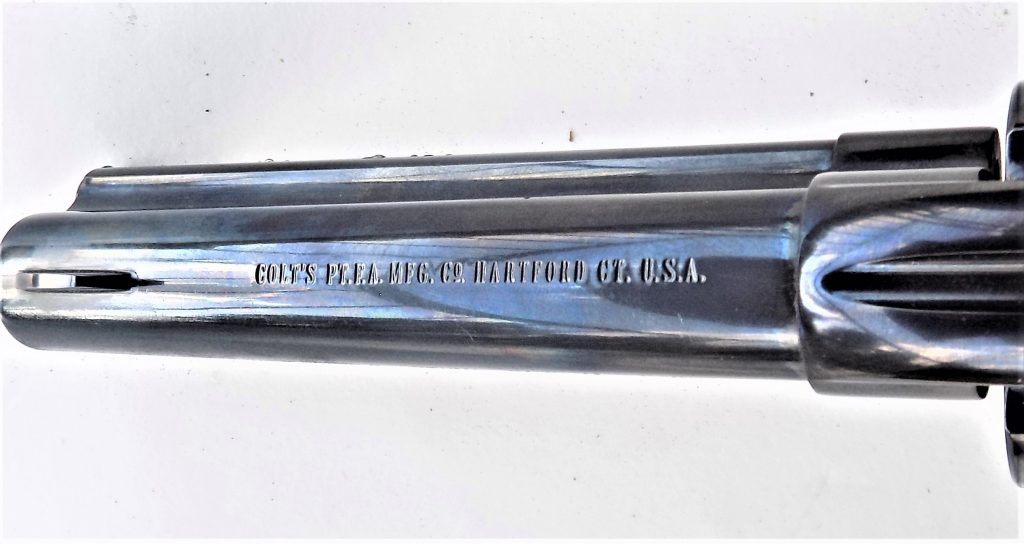
The first revolvers issued were 7 ½ inch barrel versions. A 5 ½ inch barrel revolver was offered for civilian sales. At the request of lawmen including Bat Masterson a version with the barrel cut all of the way back to the ejector rod was offered. This type was a popular piece with those that carried the revolver under the suit coat, in a shoulder holster or a crossdraw holster. The type was sometimes known as the “gunfighter’s gun.” You give up little in accuracy with this barrel length. The Colt SAA was eventually phased out of service and replaced with a fragile and woefully underpowered .38 Colt. The Model 1892 saw action in the Philippines where it proved practically worthless. Some like to engage in revisionist history and claim the .38’s shortcomings were overstated. I cannot disagree more with this intellectually incongruent outlook. I doubt the .38 Colt with its 152 grain bullet at 750 fps could be more effective than the .38 Special with its 158-grain bullet at 850 fps, which is a lousy modern police load.
The Colt SAA was pressed into service and proved as effective as ever.
The Colt SAA was a favorite of Lawrence of Arabia, General Douglas McArthur, General George S. Patton, and others, not to mention Masterson and many other gunfighters. Even after the Colt SAA was replaced by the Colt 1905 double action revolver and then the Colt 1911 Government Model .45 automatic the SAA remained popular.
A good balance, a crisp trigger, a good point, and unequaled power in a fairly compact revolver were good points. The Mexican revolution kept the SAA in action a decade past its prime. During prohibition tough peace officers such as Tom Threepersons and Frank Hamer carried the Colt SAA, each in 4 ¾ inch length. Threepersons gun featured a custom fitted tall square front post giving lie to any myth of point shooting.
The SAA enjoyed fewer and fewer sales during the depression. Even though the pistol was chambered for the .357 Magnum soon after the Magnum’s introduction the revolver was discontinued and production concentrated on war time gear for World War Two.
After the war the Colt SAA was not revived. The fast draw craze—a fun thing that brought a lot of shooters into the sport—brought the Colt back along with a good number of imitators about 1956. These are known as the second generation Colt revolvers. Eventually the original equipment wore out, there was a slight break in production, and the new revolver is known as the Third Generation Colt Single Action Army. They are well made of good material and offer tight tolerances. They are modern shooters, not collectibles, and in current production. They are by no means widely available or on the shelf in every shop but if you want a Colt you may obtain one with patience.
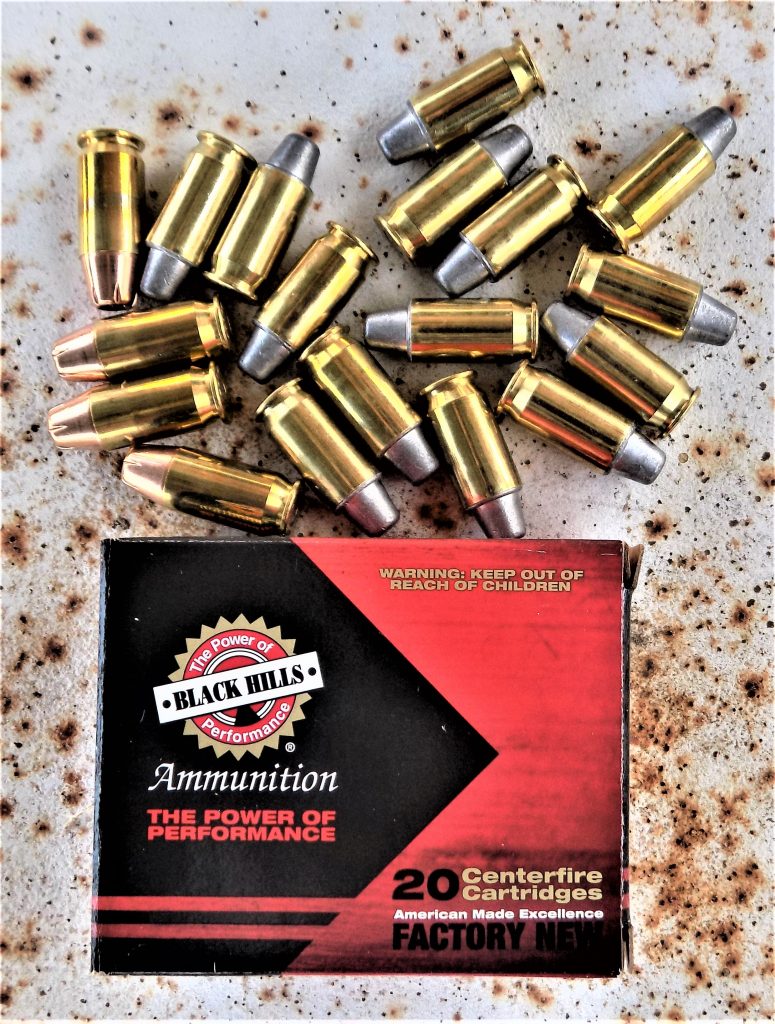
The Colt illustrated is my favorite Single Action Army, not only of the ones in the safe but of any I have owned. The pistol is the Wiley Clapp edition, named for the famous gun writer and author.
Mr. Clapp knows a bit about firearms and this revolver is his idea of what a modern SAA should be. It is made for shooters and designed by a shooter.
The revolver features a beautiful Colt blue. Some like casehardened revolver frames, some do not. If you like Colt blue this is your gun. The barrel is the gunfighter’s 4 ¾-inch length. The grips are a special version with the Colt emblem and a scalloped dragon like scale. They fit the hand well like all Single Action Army grips. For some folks with larger hands the small finger will hang off depending on the grip style. The sights are the standard old type trough rear sights and fairly round front sight.
The engraving on this Colt is a bit different a bolder style than current SAA revolvers. The big difference is the chambering. (There have been other Wiley Clapp guns in .44 Russian/.44 Special.) The Wiley Clapp revolver is chambered in .45 ACP. The .45 ACP is widely available, inexpensive compared to the .45 Colt, and offers plenty of power for personal defense. For cowboy action shooting it may not be authentic but it is a great cartridge.
Auxiliary cylinders chambered in .45 ACP for .45 Colt SAA revolvers have been available since at least 1930. As for positive ejection the original .45 Colt uses a button ejector system, so the .45 Colt didn’t need much of a case rim. (Making it less than optimal in double action revolvers.) The .45 ACP revolver is ballistically efficient, easy to handload, and powerful. So the .45 ACP is a good choice for shooters as opposed to collectors. The revolver illustrated was manufactured almost ten years ago and not fired until I became the proud owner.
Shots Fired
I found the Wiley Clapp revolver on the shelf at a friend’s shop. My wife and I were hitting estate sales and yard sales, a wonderful pastime, and just happened to stop by Morris shop. What a find, I thought, but I don’t need it. Cannot afford it right now. Three days later I took it home. And fired it.
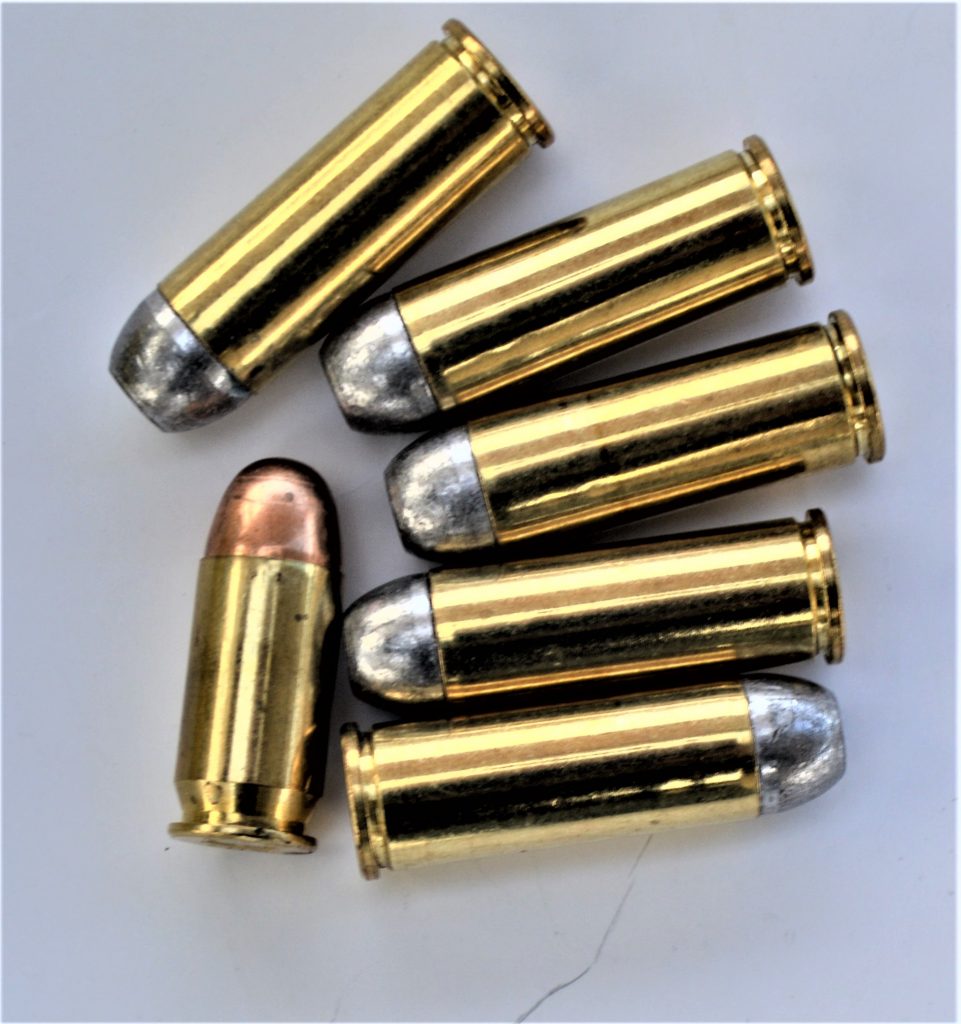
Firing the SAA is best accomplished in a rhythm. This isn’t the revolver to bench rest and deliberate over the shot. It is fired quickly, off hand, with a fast trigger Squeeze the grips tightly just at the Colt emblems and press the trigger straight to the rear. The Wiley Clapp revolver is a lot of gun!
The majority of the initial loads were from Black Hills Ammunition. I used the 230 grain FMJ and the 200 grain LSWC. I also fired a few of the hard hitting 230 grain JHP loads. My experience with double action .45 ACP/.45 Auto Rim revolvers led me to expect modest accuracy from FMJ bullets. The long jump from the forcing cone to the barrel throat results in the bullet tipping a bit I believe. On the other hand, the lead semi wadcutter with its long bearing surface delivers much better accuracy. The Black Hills Ammunition 200 grain LSWC breaks 870 fps from the 4 ¾-inch barrel SAA. This is a good all-around general purpose load. At a long 25 yards this load will put five shots into 2 ½ inches or less. The FMJ loads run from 2.5 to 3.5 inches- still plenty accurate for most uses. The 230 grain JHP was more accurate than the FMJ loading. Each is a hard hitting load with much merit for personal defense.
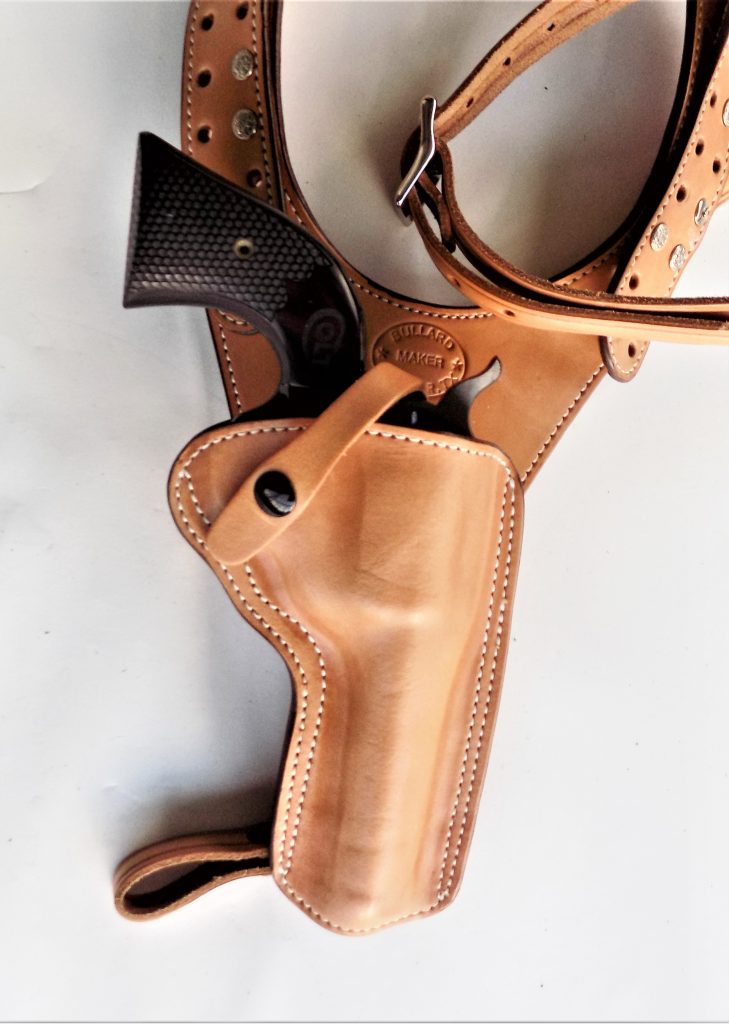
So, of what use is a SAA in 2020? I find the Colt a good general purpose revolver for spelunking, hiking, and for personal defense when camping. It will put meat on the tower at moderate range and offers real utility for personal defense as well. You have to have something to carry the revolver in and this is where it gets interesting. For carrying the revolver out of the way under a jacket the Bullard Leather Company shoulder holster is the best thing going. No attention to detail is spared. The straps are run through a creasing machine. These straps spread the weight of the revolver about, making it much easier to carry without pain in the lower back. The holster may be removed for use on the belt as well. I also use the Bullard (Bullarleather.com ) Bodyguard. I ordered mine in exotic leather. Bullard offers shark, rhino, elephant and a few other exotic leathers. The Bodyguard carries well under a relatively short jacket. I have several for the SAA, Colt Government Model, and other handguns.
The Colt SAA has been called Colt’s best revolver. When history and emotional attachment are counted it may well be. The Wiley Clapp version is perhaps the best suited to modern shooters of any single action revolver yet manufactured.



